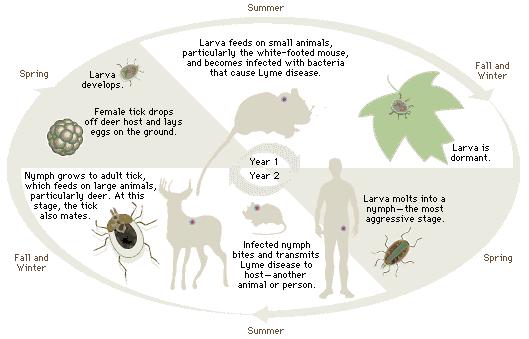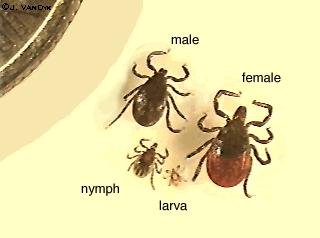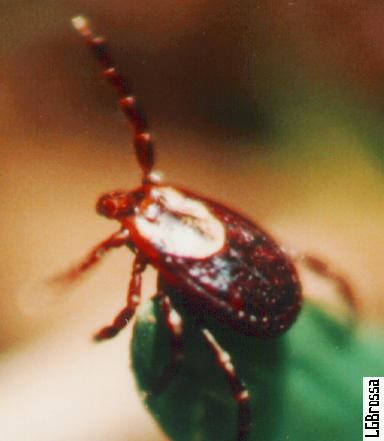Deer Tick

Life cycle of the Deer Tick and Lyme Disease
CDC: Environmental Health; CDC; Lyme Disease

Female Deer Tick (Family Ixodidae)
Ticks have four pair of legs, although it is often regarded as being part of the family of
insects, it is not. Ticks relate to different fauna and flora in their life cycle as parasites.
On the Long Point Spit Lymes disease has created caution amongst the tourist and local visitor
to the Point. Research and concern has recently come to the forefront with regard to the deer
tick and its ability to carry serious virus diseases. When outdoors on Long Point check clothing
and body immediately. If a tick is attached to the skin, the safest way to remove is to use needle
nose tweezers and grasp the tick as close to the skin as possible move back and forth and then
pull the straight out.

Wood Tick

Sheep Tick
Ticks are members of the class Arachnida, which includes the spiders, scorpions, daddy longlegs, and mites. All ticks are
carnivorous, using their mouthparts to anchor themselves to the skin, cut a small hole, and suck the blood of mammals, birds,
reptiles, and humans. A number of tick species transmit diseases infecting livestock, pets, and humans.
London Scientific Films/Oxford Scientific Films & Microsoft Illistration
Deer Tick & Lyme Disease Cycle," Microsoft® Encarta® 96 Encyclopedia. © 1993-1995 Microsoft Corporation. All rights
reserved.
Back to Insect Index
Design by:
 Pagoda Vista
Pagoda Vista





